Tet Nguyen Dan is the most important celebration in Vietnamese culture. Translated it means “the first morning of the first day”, and it is the Vietnamese version of the Lunar New Year. The rituals and celebrations of Tet reflect the various cultures of the different regions, but they are all holistic, mindful of the connection between humans and their natural and spiritual world. There are many preparations for the Tet holiday, which I’ve mentioned throughout — cleaning and beautifying homes and businesses are key.
Today is the first day of Tet and is the most exciting time for young and old alike. Signifying a new beginning, cleansing of pat misfortunes and hopes for a brighter. Since it is believed that the actions one takes on this first day will have consequences for the year, everyone tries to be happy and jovial and avoid negative actions. In the past, the celebrations would last for an entire month, however with economic development and the practicalities of modern daily living, Tet activities now last for 7-10 days. This year is the Year of the Rooster; and I was born in a Year of the Rooster too, both my birth year and this year is on the Fire branch. People born in the Year of Rooster according to Chinese zodiac have many excellent characteristics, such as being honest, bright, communicative and ambitious.
The streets were alive as we headed for the most prominent and important historical site in Hue — The Imperial Enclosure. It is a citadel within a citadel, housing the emperor’s residence, temples and palaces and the main buildings of the state within a 6 meter-high, 2.5 km long walls. Although badly bombed during both the French and the American wars, there has been much restoration done in many part of the huge complex. The Nguyen dynasty (1802-1945) ruled Vietnam from Hue in order to try to unite the north and the south. The Ngo Mon Gate was the principal entrance to the Imperial Enclosure, and the main door was reserved for the Emperor, along with the bridge across a lotus pond. The emperor appeared here on important occasions, most notably for the promulgation of the lunar calendar. in August, 1945, the Nguyen dynasty ended when Emperor Bao Dai abdicated to a delegation sent by Ho Chi Minh. At the temple complex are nine dynastic urns, representing each of the Emperors that reigned during that time. Each is decorated with 17 bas-reliefs and named in accordance with the posthumous titles of each. They enormous bronze castings, which stand in a row outside of the To Mieu Temple. The mosaic tiles on the tops of many of the various buildings include the themes of the four holy animals — dragon, unicorn, phoenix and turtle — the four sacred symbols — apricot, orchid, chrysanthemum, bamboo — and other reflections from Oriental philosophy of Confucianism, Buddhism and Taoism.
The city of Hue sits on the Perfume River and there are lovely parks and esplanades along both sides, which today were filled with people in their finest clothes, children with toys, and flowers in large sculptures. And swan boats reminiscent of those in the Boston Common. This city seems to be very urbane and civilized, and in part it is due to the recognition of the importance of the Unesco designation given to the Imperial Enclosure and all the sacred and ancient texts which are housed there.
A lovely day. And tomorrow we will take the Vietnamese railway to Da Nang. Another adventure.
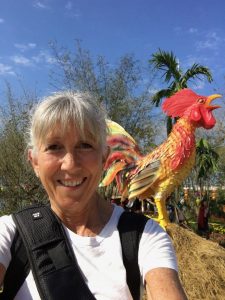
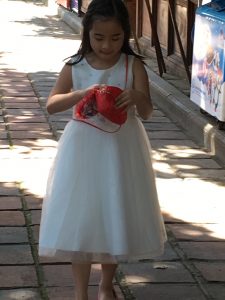
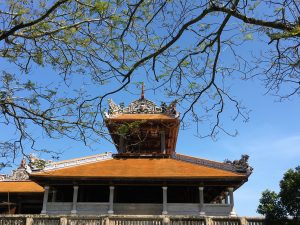
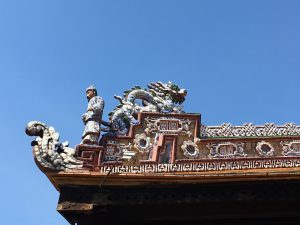
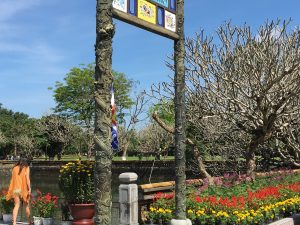

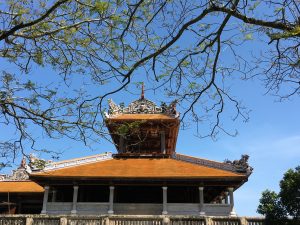
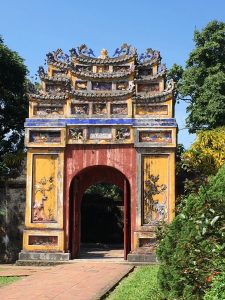
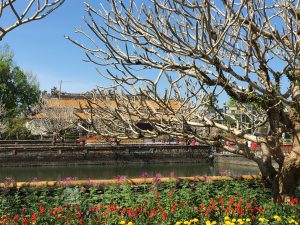
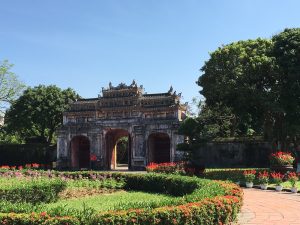
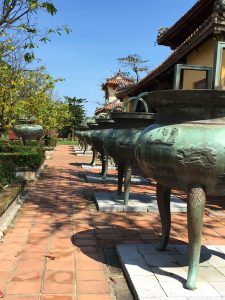
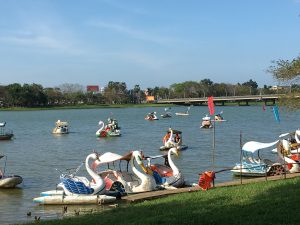
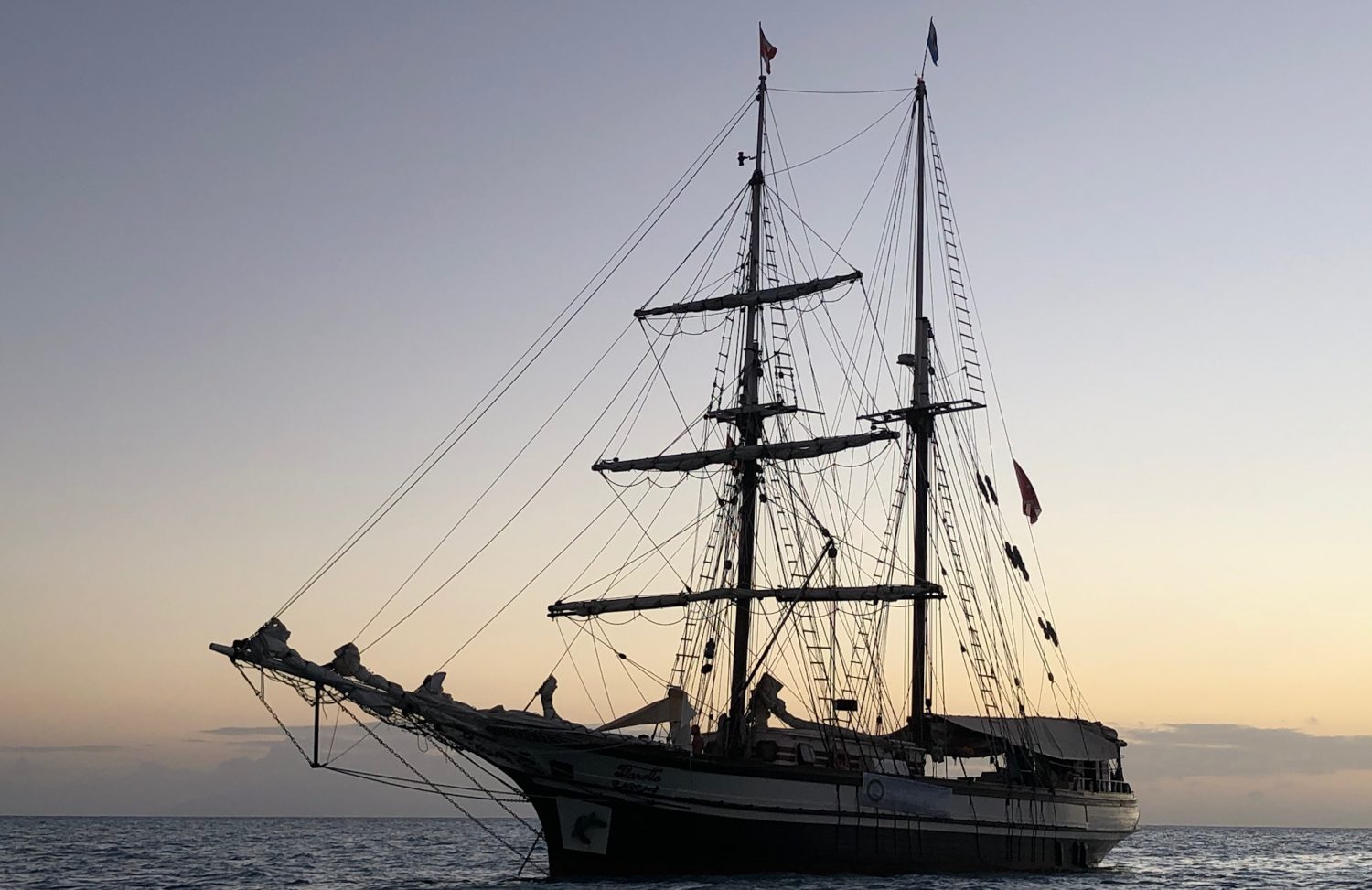
What are those gateways made of?
Most were ceramic or non-precious stone mosaics… very detailed.